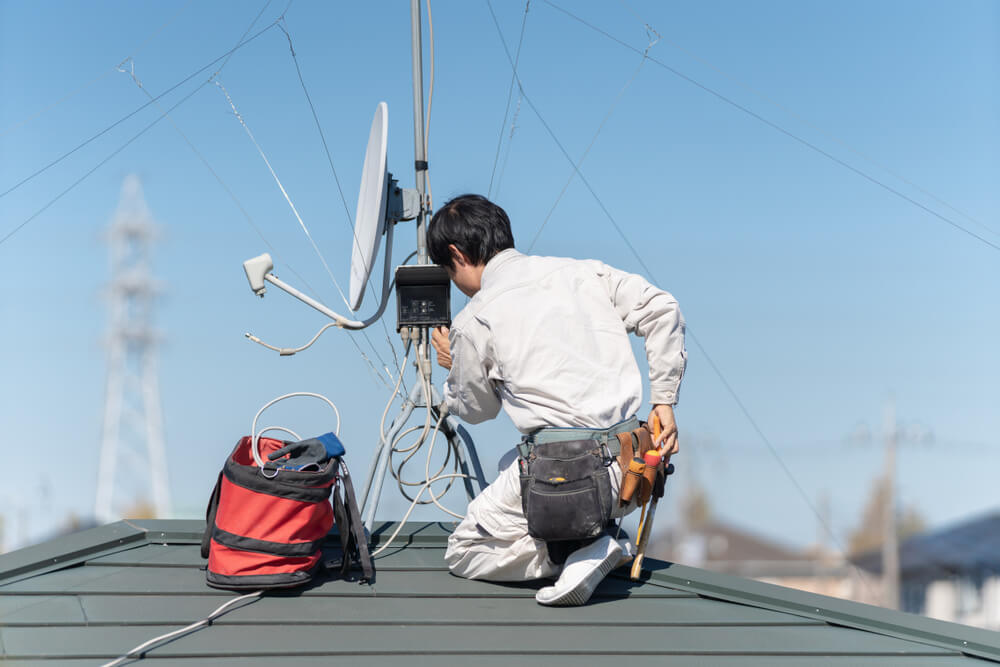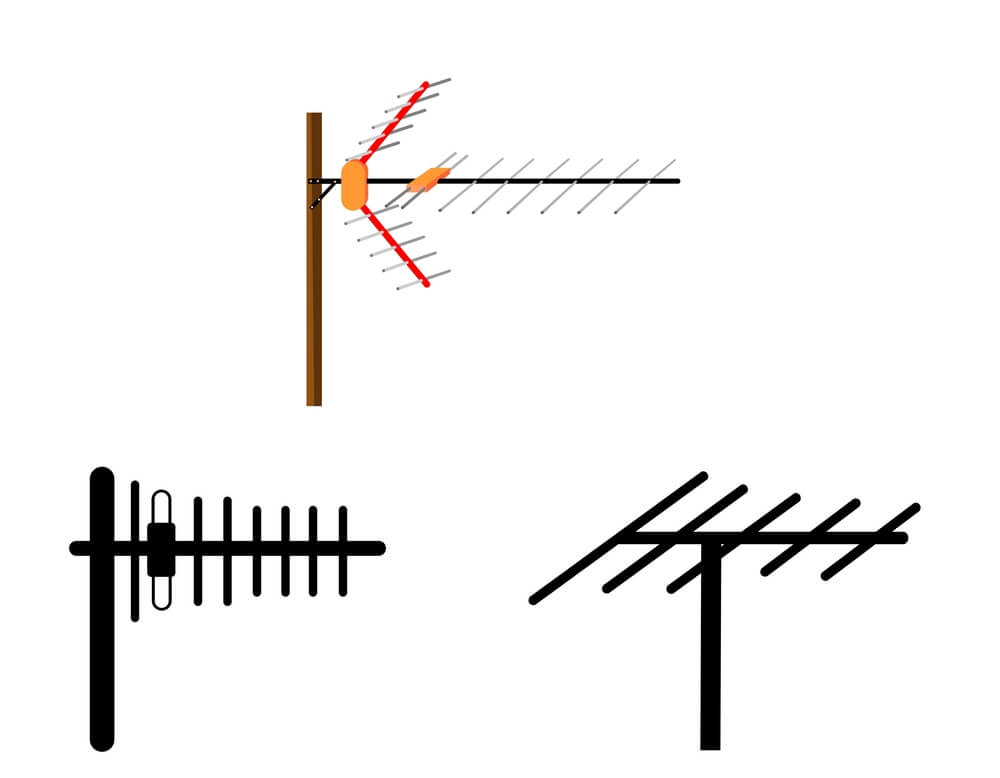It is not complicated to install or TV aerial repairs. For this reason, the first thing is to learn about the regular troubles of a TV aerial and the fundamental guidelines for its repair to get you watching your favourite shows as soon as possible.
In this guide, you will learn the process of repairing your device as well as guidelines which will enable you to solve every issue that might arise during the process. This guide provides information and skills on how to do TV aerial repairs in cases of signal loss, damage or misalignment.
Identifying the Problem
Check Signal Strength: Respectively, if the motorists realize that the signals are weak or absent, there are indications toward the reception problems, go to the signal strength on your TV.
Inspect Cable Connections: Check that the cables that are attributed to the aerial to the TV or other devices are properly connected. Look for signs of any deterioration, charring, frays, or abrasion on the cables.
Assess Aerial Position: Check the position of the aerial as it should point towards the transmitting station and nowhere near any obstacles or other objects.
Scan for Channels: Switch to digital for your television or set top box to do channel search. In case there are no channels found, this may be an indication that the aerial or the means of installation is flawed.
Look for Physical Damage: Check if the aerial has been damaged in any way e. g. bent or broken in some way that will negatively affect signal reception.
Consider Environmental Factors: Think or look for any new changes within the surroundings such as constructions or trees which might have grown taller and are in the line of vision of signal transmission.
Test with Another TV: In case you can, link the aerial into another TV to compare if the problem is continuing, which will make it simpler to see if the problem is with the aerial or the television.
Check for Interference: Ensure you are aware of the potential interferences within the environment that may influence signals such as those from electronic gadgets.
Consult Manuals or Guides: Consult the user’s manual that comes with the TV set and the manuals of the aerial equipment to obtain hints and guidance.
Tools and Equipment Needed for TV Aerial Repairs
- Ladder
- Signal meter
- TV’s signal strength indicator
- Digital compass
- Wrench
- Screwdrivers
- Pliers
- Cable cutters
- Safety apparel such as gloves, eye protection gear like goggles, and protective clothing especially shoes or boots.
- Antennas, couplers, connectors, mount: For digital TV application new coaxial cables or new connecting component and mounting hardware is required.
- Weatherproofing materials
How to do TV Aerial Repair Step by Step

Inspect the Aerial: The best way to start in identifying the problem is to first, take a look at the TV aerial for any signs of damages or deterioration. These include the check for bent or broken elements, loose connections, and oxidation. Notice any areas that require fixing, or that require a simple touch up or painting over.
Assess Signal Strength: By using a signal meter or going to your television and checking the signal strength output, you can determine a current signal strength. It assists in establishing whether the aerial is properly working and if there are any signal distractions. It is always necessary to boost your signal strength.
Check Cables and Connectors: Also look for cuts or corrosion on coaxial cables and connectors they use. Change the faulty cables or connectors so that a proper connection is made between the aerial and the TV.
Adjust Alignment: If no signal is received or the signal strength is low then it could well be that the aerial is positioned improperly. Location: You should use a digital compass or a mobile application to find the right direction for the maximum signal. Which direction should the aerial face? Look at the broadcasting tower and aim the aerial in that direction.
Secure Mounting: Make sure that the aerial is properly fixed in its correct position with no chance of coming loose. Make sure that any loose bolts or brackets that may be connected to a moving part are properly tightened so that they do not interfere with reception.
Test Signal Reception: Once the equipment is repaired or tweaked, use a signal meter or the TV signal strength to check the signal reception again. Make sure the signal strength has increased and confirm receiving a quality signal that is not intermingled with others.
Fine-Tune Alignment: If the signal strength is still low, then the user should rotate the aerial a little more this way or that way. Change the position gradually and observe the signal strength so that you can determine the exact position to use.
Weatherproofing: Cable jackets such as silicone sealants or waterproof tapes should be used to protect exposed cables and connectors from moisture and corrosion that may occur from exposure to the environment. This provides protection against corrosion and leads to the increased durability of your TV aerial.
Monitor Performance: Take some time to examine the aerial’s functionality occasionally as it may be affected by prevailing weather conditions or changes in the environment. Ensure they fix broken parts to allow good signals get through to the other side.
Problems Connected with TV Aerials
Signal Interference: For instance, certain barriers such as trees or buildings may hinder transmission of the signal or interference from other electronic gadgets like microwave or cordless phone may interfere with the signal.
Poor Reception: It could be the case that the aerial is not well fixed and thus influences the reception of the signals. This could be due to the positioning or the position of its antenna whereby it may need to rotate to capture signals from different transmitters.
Cable Damage: Sometimes the aerial cable that connects the aerial to the TV deteriorates and may bring a wrong signal or a poor signal to the television.
Weather Damage: Extreme climatic conditions such as humidity, strong winds, or extremely high or low temperatures have an impact in the functionality of the aerial.
Obsolete Equipment: Old aerials or other accessories such as amplifiers or splitters may not be compatible with digital broadcasting standards accepted today hence one may receive poor picture quality or no reception at all.
Physical Damage: Minor damages of the aerial, for instance when bending or breaking its constituents, may affect the reception of the signal.
Incorrect Installation: Lack of mounting, missing grounding, or applying the wrong aerial for the frequencies used in your area hinders signal reception.
Multipath Interference: Reflections from adjacent surfaces or signals adopting other routes to reach the TV may interfere with the signal or distort it.
Conclusion
TV aerial repairs is quite simple if one is equipped with the right equipment, information, and time needed. As outlined in the above passage, you can easily identify and resolve problems such as signals interference, physical contacts, and alignment to give the best performance of your TV aerials.
They should ensure that the aerial is properly maintained and checked frequently so that it can serve the purpose of allowing you to view your favorite programs without any interruptions. If you take good care of your Freeview signal, then you will be able to appreciate good reception of all the TV shows for many years.








